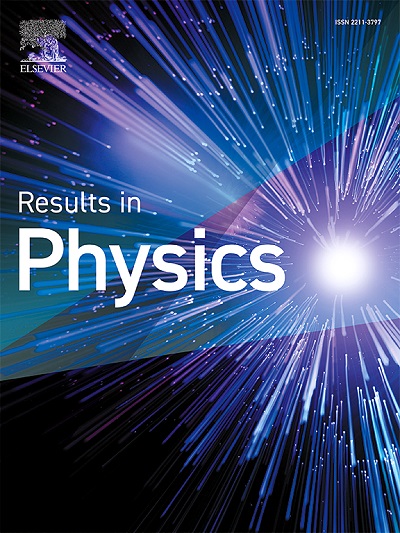Interacting dark energy models within the context of the particle creation framework: A dynamical systems study
IF 4.6
2区 物理与天体物理
Q2 MATERIALS SCIENCE, MULTIDISCIPLINARY
引用次数: 0
Abstract
In this paper, we employ the dynamical system method to probe the cosmological evolution in a matter creation model admitting interacting dark energy behavior. The set of dynamical variables in this framework allows one to trace the cosmic evolution in comparison to the cold dark matter (CDM) model. The critical points in cosmological phase space are analyzed for their stability nature. The numerical integrations of the autonomous system are used to extract the evolution of cosmological quantities of the model, subjected to the initial condition compatible with observational data. The resulting cosmological behavior observed from the dynamical variables, cosmographic parameters and statefinder analysis illustrate the similarity as well as deviations from the CDM model during different cosmic expansion phases. The autonomous systems are also used to study the classical stability of models under consideration. The interacting dark energy scenario in the matter creation mechanism leads to the universe evolution, which traces their journey from the decelerating phase (composed of radiation and matter phase) into accelerating phase dominated by a negative pressure component, which is directly consistent with observations.
粒子产生框架背景下的相互作用暗能量模型:一个动力系统研究
在本文中,我们采用动力系统的方法来探索一个承认相互作用暗能量行为的物质创造模型中的宇宙演化。在这个框架中,动力学变量的集合允许人们将宇宙演化与Λ冷暗物质(ΛCDM)模型进行比较。分析了宇宙相空间中临界点的稳定性。利用自治系统的数值积分,在初始条件与观测数据相容的条件下,提取模型的宇宙学量的演化。从动力学变量、宇宙学参数和状态仪分析中观测到的宇宙学行为说明了在不同的宇宙膨胀阶段与ΛCDM模型的相似性和偏差。自治系统也被用来研究所考虑的模型的经典稳定性。物质产生机制中的暗能量相互作用情景导致了宇宙演化,追溯了它们从减速阶段(由辐射和物质阶段组成)到以负压成分为主的加速阶段的历程,这与观测结果直接一致。
本文章由计算机程序翻译,如有差异,请以英文原文为准。
求助全文
约1分钟内获得全文
求助全文
来源期刊

Results in Physics
MATERIALS SCIENCE, MULTIDISCIPLINARYPHYSIC-PHYSICS, MULTIDISCIPLINARY
CiteScore
8.70
自引率
9.40%
发文量
754
审稿时长
50 days
期刊介绍:
Results in Physics is an open access journal offering authors the opportunity to publish in all fundamental and interdisciplinary areas of physics, materials science, and applied physics. Papers of a theoretical, computational, and experimental nature are all welcome. Results in Physics accepts papers that are scientifically sound, technically correct and provide valuable new knowledge to the physics community. Topics such as three-dimensional flow and magnetohydrodynamics are not within the scope of Results in Physics.
Results in Physics welcomes three types of papers:
1. Full research papers
2. Microarticles: very short papers, no longer than two pages. They may consist of a single, but well-described piece of information, such as:
- Data and/or a plot plus a description
- Description of a new method or instrumentation
- Negative results
- Concept or design study
3. Letters to the Editor: Letters discussing a recent article published in Results in Physics are welcome. These are objective, constructive, or educational critiques of papers published in Results in Physics. Accepted letters will be sent to the author of the original paper for a response. Each letter and response is published together. Letters should be received within 8 weeks of the article''s publication. They should not exceed 750 words of text and 10 references.
 求助内容:
求助内容: 应助结果提醒方式:
应助结果提醒方式:


